


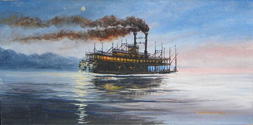
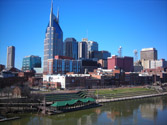
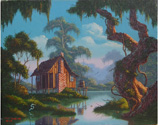
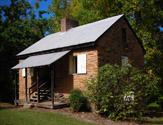









Sunbelt Excursions
New Orleans
Not Merely a Destination, It's an Experience!
Not Merely a Destination, It's an Experience!
New Orleans is different things to different people.
To world travelers, New Orleans is the most European city in the United States. To the nostalgic, it is a picturesque cityscape in which ancient trees shade historic houses (each with its own story to tell). To business executives and white collar workers, it is one of North America's foremost convention meccas. As for revelers and college-age prodigals, the Big Easy is an oasis where strait-laced inhibitions are often exchanged for frivolous activities like heavy drinking and even illicit rendezvous.
To world travelers, New Orleans is the most European city in the United States. To the nostalgic, it is a picturesque cityscape in which ancient trees shade historic houses (each with its own story to tell). To business executives and white collar workers, it is one of North America's foremost convention meccas. As for revelers and college-age prodigals, the Big Easy is an oasis where strait-laced inhibitions are often exchanged for frivolous activities like heavy drinking and even illicit rendezvous.
Words like sultry, mysterious and iniquitous can describe New Orleans, but such adjectives may even contribute to the allure of this otherwise pleasing and hospitable city.
While some might liken the city to a modern-day Sodom and equate Hurricane Katrina's fury with the wrath of God in the Old Testament (somehow forgetting Matthew 5:45), it is interesting that the supposed-conservative Republican National Convention and the annual meeting of the Southern Baptist Convention were held in New Orleans in 1988 and 2001 respectively! The Big Easy has long attracted a varied group of tourists and conventioneers, proving there has to be more to it than Mardi Gras or Bourbon Street's nightlife.
While some might liken the city to a modern-day Sodom and equate Hurricane Katrina's fury with the wrath of God in the Old Testament (somehow forgetting Matthew 5:45), it is interesting that the supposed-conservative Republican National Convention and the annual meeting of the Southern Baptist Convention were held in New Orleans in 1988 and 2001 respectively! The Big Easy has long attracted a varied group of tourists and conventioneers, proving there has to be more to it than Mardi Gras or Bourbon Street's nightlife.
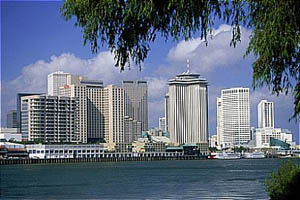
Harry Costner/Courtesy of New Orleans Metropolitan Convention and Visitors Bureau
In his book Why New Orleans Matters, Crescent City resident Tom Piazza wrote, "Music was my entry point into the world of the spirit that New Orleans embodies. But there are so many other possible entry points, too---culinary, social, historical, literary and architectural---all of them connected." With world-class hotels, unparalleled food and a plethora of attractions, joie de vivre and, of course, some spending money are all that are needed to experience and enjoy New Orleans.
Louisiana Lieutenant Governor Mitch Landrieu, in a Southern Edition interview published on November 20, 2006, stated, "Louisiana is America's greatest cultural destination, and is what we call 'The Soul of America.' It's a place that could be foreign to Americans and American to foreigners---a place that captures rich and diverse cultures in language, food, architecture, politics, arts, music and so much more, and brings it all together like great jazz."
If Louisiana is the "Soul of America," New Orleans is arguably the pulse of Louisiana.
Some of the state's finest institutions of higher learning---University of New Orleans, Louisiana State University Medical School and Tulane and Loyola Universities---are situated in the Crescent City. An important transportation center, New Orleans is also home to the state's busiest airport and one of the world's busiest shipping ports. And the city is a culmination of Louisiana's diverse cultures, races and ethnicities.
As distinct as its citizens, New Orleans' neighborhoods, districts and wards are unique and often historically significant, making a review of areas most frequented by tourists essential to any prospective visitor. Downtown includes the Central Business District (self-explanatory), the Vieux Carré, Tremé and Faubourg Marigny. Uptown's most traveled section is the Garden District.
If Louisiana is the "Soul of America," New Orleans is arguably the pulse of Louisiana.
Some of the state's finest institutions of higher learning---University of New Orleans, Louisiana State University Medical School and Tulane and Loyola Universities---are situated in the Crescent City. An important transportation center, New Orleans is also home to the state's busiest airport and one of the world's busiest shipping ports. And the city is a culmination of Louisiana's diverse cultures, races and ethnicities.
As distinct as its citizens, New Orleans' neighborhoods, districts and wards are unique and often historically significant, making a review of areas most frequented by tourists essential to any prospective visitor. Downtown includes the Central Business District (self-explanatory), the Vieux Carré, Tremé and Faubourg Marigny. Uptown's most traveled section is the Garden District.
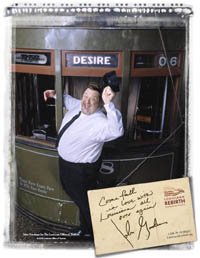
Golden Globe-winning actor John Goodman is one of numerous celebrity New Orleanians urging vacationers to "Come fall in love with Louisiana all over again."
The storied Vieux Carré (commonly referred to as the French Quarter) is the section of downtown located within the parameters of the Mississippi River, Esplanade Avenue, North Rampart Street and Canal Street. For many, this square mile area is the crux of New Orleans, and is unquestionably the most visited part of town.
Tremé, a predominantly African American community, was historically the primary portion of town in which free people of color lived. Today, it is home to the Louisiana Museum of African American History and Louis Armstrong Park (which contains historic Congo Square and the Mahalia Jackson Theatre of the Performing Arts). Mayor Ray Nagin is from Tremé.
Downriver from the French Quarter, Faubourg Marigny is home to Elysian Fields Avenue, a street referenced in Tennessee Williams' A Streetcar Named Desire. Occupying land that once comprised the family plantation of 19th century developer Bernard Xavier Philippe de Marigny de Mandeville, this New Orleans neighborhood is approximately 200 years old, and was the birthplace of jazz performer Jelly Roll Morton.
Noted for its beautiful southern mansions and lush, century-old gardens, the Garden District was once a suburb settled by wealthy Anglo-Americans. It is located upriver from the Central Business District and French Quarter, and is easily accessible from downtown via St. Charles Avenue or Magazine Street.
Another Uptown feature is Audubon Park, a city park named in honor of former New Orleans resident and naturalist John James Audubon (who is most noted for painting, cataloguing and describing North America's birds). Sitting on former plantation property belonging to New Orleans' first mayor, Jean Étienne de Boré, the 340-acre expanse was used for the World's Industrial and Cotton Centennial Exposition of 1884-85. Located adjacent to Loyola and Tulane Universities and the Mississippi River, the park was designed by John Olmsted, father of Frederick Law Olmsted (whose handiwork includes New York's Central Park).
"Laissez les bon temps rouler" (or "Let the Good Times Roll")
In New Orleans, one can never be bored! The city is home to numerous festivals, exciting sports and entertainment and various attractions.
Tremé, a predominantly African American community, was historically the primary portion of town in which free people of color lived. Today, it is home to the Louisiana Museum of African American History and Louis Armstrong Park (which contains historic Congo Square and the Mahalia Jackson Theatre of the Performing Arts). Mayor Ray Nagin is from Tremé.
Downriver from the French Quarter, Faubourg Marigny is home to Elysian Fields Avenue, a street referenced in Tennessee Williams' A Streetcar Named Desire. Occupying land that once comprised the family plantation of 19th century developer Bernard Xavier Philippe de Marigny de Mandeville, this New Orleans neighborhood is approximately 200 years old, and was the birthplace of jazz performer Jelly Roll Morton.
Noted for its beautiful southern mansions and lush, century-old gardens, the Garden District was once a suburb settled by wealthy Anglo-Americans. It is located upriver from the Central Business District and French Quarter, and is easily accessible from downtown via St. Charles Avenue or Magazine Street.
Another Uptown feature is Audubon Park, a city park named in honor of former New Orleans resident and naturalist John James Audubon (who is most noted for painting, cataloguing and describing North America's birds). Sitting on former plantation property belonging to New Orleans' first mayor, Jean Étienne de Boré, the 340-acre expanse was used for the World's Industrial and Cotton Centennial Exposition of 1884-85. Located adjacent to Loyola and Tulane Universities and the Mississippi River, the park was designed by John Olmsted, father of Frederick Law Olmsted (whose handiwork includes New York's Central Park).
"Laissez les bon temps rouler" (or "Let the Good Times Roll")
In New Orleans, one can never be bored! The city is home to numerous festivals, exciting sports and entertainment and various attractions.
February's Carnival and its climax, Mardi Gras, along with the New Orleans Jazz & Heritage Festival, are the Big Easy's most popular celebrations, but this year visitors and residents can also look forward to Earth Fest at the Audubon Zoo in March, the French Quarter Festival in April, Go 4th on the River (an Independence Day fireworks extravaganza) and the Essence Music Festival in July, just to name a few.
The Crescent City has hosted Super Bowls XXXI and XXXVI, various Olympic trials and other major sporting events like the 1994 National Gymnastics Championship. In addition to supporting the home games of the city's own major league teams, the Saints (NFL) and Hornets (NBA), New Orleanians can attempt to pacify their insatiable appetites for competition by attending horse racing's Louisiana Derby in March; the PGA's Zurich Classic in April; the Bayou Classic in November; and the New Orleans Bowl in December.
The Crescent City has hosted Super Bowls XXXI and XXXVI, various Olympic trials and other major sporting events like the 1994 National Gymnastics Championship. In addition to supporting the home games of the city's own major league teams, the Saints (NFL) and Hornets (NBA), New Orleanians can attempt to pacify their insatiable appetites for competition by attending horse racing's Louisiana Derby in March; the PGA's Zurich Classic in April; the Bayou Classic in November; and the New Orleans Bowl in December.
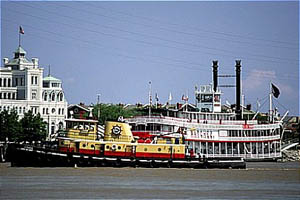
Richard Nowitz/Courtesy of NOMCVB
Tugboat and Steamboat Natchez
As for attractions, the Crescent City possesses many interesting and educational diversions in addition to its multitude of historical treasures. Foremost on any itinerary are the Audubon Aquarium of the Americas, the Audubon Zoo and the National World War II Museum.
Though the Audubon Nature Institute's Aquarium of the Americas suffered significant damage and lost most of its 10,000 fish due to Hurricane Katrina, the popular riverfront attraction reopened in May 2006, having replenished its extensive animal collection and undergone millions of dollars in repairs.
Located within the confines of Audubon Park in Uptown, Audubon Zoological Gardens is one of the country's top-ranked zoos. Its residents include rare white tigers and white alligators. Guests of all ages are thrilled with the zoo's live animal presentations and hands-on animal encounters. An additional highlight is the zoo's Louisiana swamp exhibit.
A memorial and tribute to the group of Americans retired NBC news anchor Tom Brokaw has termed "The Greatest Generation," New Orleans' National World War II Museum (formerly the National D-Day Museum) celebrates the American Spirit and recalls the struggles and triumphs of the United States at a crucial juncture of its history.
Come Hungry!
Though the Audubon Nature Institute's Aquarium of the Americas suffered significant damage and lost most of its 10,000 fish due to Hurricane Katrina, the popular riverfront attraction reopened in May 2006, having replenished its extensive animal collection and undergone millions of dollars in repairs.
Located within the confines of Audubon Park in Uptown, Audubon Zoological Gardens is one of the country's top-ranked zoos. Its residents include rare white tigers and white alligators. Guests of all ages are thrilled with the zoo's live animal presentations and hands-on animal encounters. An additional highlight is the zoo's Louisiana swamp exhibit.
A memorial and tribute to the group of Americans retired NBC news anchor Tom Brokaw has termed "The Greatest Generation," New Orleans' National World War II Museum (formerly the National D-Day Museum) celebrates the American Spirit and recalls the struggles and triumphs of the United States at a crucial juncture of its history.
Come Hungry!
Tom Piazza wrote in Why New Orleans Matters, "Food in New Orleans is rarely a means to an end. It is an end in itself, and one in which the participants are emotionally invested. As with New Orleans music, it is part of a shared ritual in which life itself is appreciated and honored in all its specificity and variety, its thereness."
Famous for great restaurants like Galatoire's, Antoine's, Arnaud's, Brennan's, Commander's Palace and celebrity chef Emeril Lagasse's decidedly upscale Emeril's Delmonico and his slightly informal NOLA, New Orleans is truly one of the world's renowned culinary centers. From breakfast at Brennan's to Café du Monde's delectable beignets (square French doughnuts) and chicory-flavored café au lait (half and half coffee and hot milk) to spicy Cajun fare at some unpretentious corner diner, Crescent City visitors can relish every indulgence and probably expect to gain a few pounds.
Famous for great restaurants like Galatoire's, Antoine's, Arnaud's, Brennan's, Commander's Palace and celebrity chef Emeril Lagasse's decidedly upscale Emeril's Delmonico and his slightly informal NOLA, New Orleans is truly one of the world's renowned culinary centers. From breakfast at Brennan's to Café du Monde's delectable beignets (square French doughnuts) and chicory-flavored café au lait (half and half coffee and hot milk) to spicy Cajun fare at some unpretentious corner diner, Crescent City visitors can relish every indulgence and probably expect to gain a few pounds.
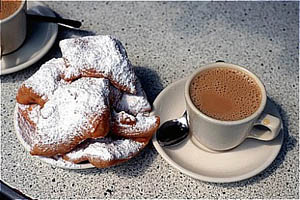
Carl Purcell/Courtesy of NOMCVB
Café au Lait and Beignets
One hundred years old, yet ageless, Galatoire's is one of Bourbon Street's most distinguished landmarks. Family-owned and operated since its founding in 1905 by Jean Galatoire, this restaurant's bill of fare includes Chicken Clemenceau, Lamb Chops Bearnaise and Crabmeat Sardou. For decades, Galatoire's would not accept reservations, and its first floor policy remains first come, first served. Long lines have been known to stream down the block as diners, including some prominent personalities, have waited for a table. Some patrons with deep pockets have even been known to pay college kids to wait in their stead.
Antoine's Restaurant, 713 St. Louis Street, is America's oldest family-run restaurant. Established in 1840 by Antoine Alciatore, this dining center is situated in the heart of the Vieux Carré between Bourbon and Royal Streets, and is perhaps most famous for creating Oysters Rockefeller. So named because of the richness of the sauce, the dish is served at fine restaurants across the nation, but the original recipe invented by Jules Alciatore, the son of Antoine's founder, remains a closely guarded secret! Antoine's has enjoyed the patronage of British Royalty, Pope John Paul II, Walt Disney, Bing Crosby, Bob Hope, Elizabeth Taylor, Helen Keller, Tom Hanks, Whoopi Goldberg, Tom Cruise and the cast of the hit NBC sitcom Friends.
Established in 1918 by French wine salesman Arnaud Cazenave, Arnaud's, 813 Bienville Street (between Bourbon and Dauphine Streets), remains one of New Orleans' key destinations for classic Creole cuisine. Its extensive menu features dishes like Filet Mignon au Poivre, Roast Louisiana Quail Elzey, Pompano Duarte, Frog Legs Provencale, Crawfish O'Connor and an Arnaud's original, Oysters Bienville. Frequented by celebrities and dignitaries, Arnaud's offers a secret stairway in which some diners seeking discretion have entered, including George H. W. Bush on the night of his presidential nomination at the Republican National Convention in 1988. Arnaud's history is colorful and legendary. During prohibition, Cazenave (or Count Arnaud, as he was called) served alcoholic beverages (often under the guise of coffee), landing him in legal trouble. Upon his death, control of the restaurant succeeded to Germaine Wells, Cazenave's scandalous daughter and queen of 22 Mardi Gras balls.
Established in 1918 by French wine salesman Arnaud Cazenave, Arnaud's, 813 Bienville Street (between Bourbon and Dauphine Streets), remains one of New Orleans' key destinations for classic Creole cuisine. Its extensive menu features dishes like Filet Mignon au Poivre, Roast Louisiana Quail Elzey, Pompano Duarte, Frog Legs Provencale, Crawfish O'Connor and an Arnaud's original, Oysters Bienville. Frequented by celebrities and dignitaries, Arnaud's offers a secret stairway in which some diners seeking discretion have entered, including George H. W. Bush on the night of his presidential nomination at the Republican National Convention in 1988. Arnaud's history is colorful and legendary. During prohibition, Cazenave (or Count Arnaud, as he was called) served alcoholic beverages (often under the guise of coffee), landing him in legal trouble. Upon his death, control of the restaurant succeeded to Germaine Wells, Cazenave's scandalous daughter and queen of 22 Mardi Gras balls.
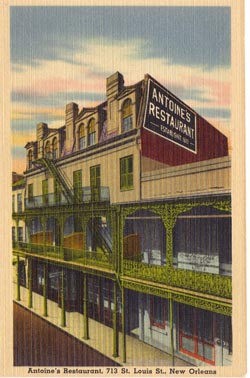
At 416 Chartres Street, diners can experience K Paul's. Designed with an open-air kitchen, the restaurant contains no freezers because Chef Paul Prudhomme and his staff use only the freshest ingredients of the highest quality. Featuring first- and second-floor dining rooms, balconies and al fresco dining in the courtyard, the menu of this French Quarter establishment changes daily, but is likely to include sumptuous creations like Blackened Twin Beef Tenders Debris, Duck and Shrimp Dulac or Blackened Louisiana Drum.
At the gateway to the Vieux Carré, hungry diners can enjoy the casual, award-winning Red Fish Grill for lunch or dinner. Under the direction of Executive Chef R. Gregg Collier, the restaurant, located at 115 Bourbon Street, serves up a variety of dishes and does not limit itself to fish or seafood. Appetizers include Blue Crabcakes and Pepper Crusted Yellowfin Tuna. Alligator Sausage & Seafood Gumbo or Shrimp Rémoulade Salad further complements a list of tempting entrees that includes Cornmeal Crusted Farm-raised Catfish (served with corn macque choux, wilted arugula and red pepper tartar sauce) and Center Cut Bone-in Pork Chop (garlic rubbed & roasted, and served with goat cheese stone-ground grits and an apple-cranberry chutney). Destined to become a highlight of your New Orleans visit, Red Fish encourages walk-in dining and takes only a limited number of reservations.
Mother's, 401 Poydras Street, is a well-liked and reasonably priced Central Business District eatery where you're likely to be addressed as "baby," "darling" and "sweetheart." It helps to know some of the lingo to ensure you don't hold up the line. For example, "debris" is the roast beef that falls into the gravy while baking. "Black Ham" is the crisp, caramelized crust from Mother's ham. And a "dressed" po' boy implies that toppings of shredded cabbage, pickles, mayonnaise, Creole and yellow mustard have been added to a po' boy sandwich. Open seven days a week, the restaurant has no dress code and doesn't accept reservations. Come as you are . . . and come early. At breakfast, enjoy waffles, eggs and southern favorites like biscuits and grits. For an alternative breakfast experience, try a shrimp creole or red bean omelet. At lunch or dinner, feast on the Famous Ferdi Special (a dressed po' boy with baked ham, roast beef and gravy) or opt for other regional fare like turtle soup with sherry or the seafood platter with étoufée and jambalaya.
At the gateway to the Vieux Carré, hungry diners can enjoy the casual, award-winning Red Fish Grill for lunch or dinner. Under the direction of Executive Chef R. Gregg Collier, the restaurant, located at 115 Bourbon Street, serves up a variety of dishes and does not limit itself to fish or seafood. Appetizers include Blue Crabcakes and Pepper Crusted Yellowfin Tuna. Alligator Sausage & Seafood Gumbo or Shrimp Rémoulade Salad further complements a list of tempting entrees that includes Cornmeal Crusted Farm-raised Catfish (served with corn macque choux, wilted arugula and red pepper tartar sauce) and Center Cut Bone-in Pork Chop (garlic rubbed & roasted, and served with goat cheese stone-ground grits and an apple-cranberry chutney). Destined to become a highlight of your New Orleans visit, Red Fish encourages walk-in dining and takes only a limited number of reservations.
Mother's, 401 Poydras Street, is a well-liked and reasonably priced Central Business District eatery where you're likely to be addressed as "baby," "darling" and "sweetheart." It helps to know some of the lingo to ensure you don't hold up the line. For example, "debris" is the roast beef that falls into the gravy while baking. "Black Ham" is the crisp, caramelized crust from Mother's ham. And a "dressed" po' boy implies that toppings of shredded cabbage, pickles, mayonnaise, Creole and yellow mustard have been added to a po' boy sandwich. Open seven days a week, the restaurant has no dress code and doesn't accept reservations. Come as you are . . . and come early. At breakfast, enjoy waffles, eggs and southern favorites like biscuits and grits. For an alternative breakfast experience, try a shrimp creole or red bean omelet. At lunch or dinner, feast on the Famous Ferdi Special (a dressed po' boy with baked ham, roast beef and gravy) or opt for other regional fare like turtle soup with sherry or the seafood platter with étoufée and jambalaya.
Relax in Comfort
"The French Quarter begins in the lobby of the Hotel Monteleone," it has been declared. One of only three hotels in the United States designated a literary landmark by the Friends of the Library Association, southern scribes Eudora Welty, Truman Capote and William Faulkner as well as novelist Ernest Hemingway and playwright Tennessee Williams have stayed at this historic, family-owned property located at 214 Royal Street. Other notable guests have included Elvis Presley, Frank Sinatra, B. B. King, Harry Belafonte and Wladziu Valentino Liberace. Named a Four-Diamond hotel by the American Automobile Association (AAA), Hotel Monteleone is a 3-time consecutive winner of the J. D. Power & Associates Award for Outstanding Customer Service, making it a superb choice for travelers who wish to be luxuriously pampered by an attentive staff in an atmosphere of elegance.
The tallest hotel in the Crescent City is the 48-floor Sheraton New Orleans. Featuring 1,110 guestrooms and 53 suites from which guests can enjoy breathtaking views of the Mississippi River and French Quarter, the hotel is particularly sought after by conventioneers because of its extensive meeting spaces. Highlights of the hotel include a fitness center, heated outdoor pool and rooftop Jacuzzi. Gourmet coffee addicts will especially take solace in the Sheraton's own Starbucks.
Another AAA Four-Diamond property is the Le Pavillon Hotel at 833 Poydras Street. Opened as the grand Hotel Denechaud in 1907, the hotel was designed by the New Orleans architectural firm of Toledano and Woggan, and featured the city's first hydraulic elevators and basement. Having undergone a major restoration in the 1970s, the hotel was renamed Le Pavillon, consummating its renaissance. Coupling modern conveniences with the genteel ambience and refined architecture of yesterday, Le Pavillon is listed on the National Register of Historic Places and is a member of Historic Hotels of America. Hotel features include Czechoslovakian crystal chandeliers in the lobby and handpainted vignettes on the ceilings of its deluxe rooms. The rooftop pool and patio and long-standing custom of serving peanut butter & jelly sandwiches with hot cocoa and milk each night at ten o'clock further contribute to this Vieux Carré hotel's uniqueness.
Le Richelieu in the French Quarter, 1234 Chartres Street, was proclaimed "The best quality buy in the French Quarter" by Travel and Leisure magazine. To suit a variety of lodging needs, the hotel's room options vary from standard single occupancy bedrooms to the VIP Suite which boasts three bedrooms and three baths. Guests can even stay in a suite named in honor of former hotel guest Paul McCartney. Besides choice accommodations, the hotel offers an array of amenities (including valet, baby sitting and multi-lingual assistance).
One of New Orleans' most interesting lodging locales is the Cornstalk Hotel, located at 915 Royal Street. The early 1800s home of French immigrant Francoise-Xavier Martin was so named because of its cornstalk wrought iron fencing. The fence was made by Philadelphia foundry Wood and Perot in 1850 for owner Dr. Joseph Biamenti (as a gift for his wife who was homesick for her beloved Midwest). Guests of this inn have ranged from Harriet Beecher-Stowe of Uncle Tom's Cabin fame to then-Professor Bill and Hillary Rodham Clinton. All rooms include private baths, cable television and wireless internet, and rates start at under $100 (at time of publication).
"The French Quarter begins in the lobby of the Hotel Monteleone," it has been declared. One of only three hotels in the United States designated a literary landmark by the Friends of the Library Association, southern scribes Eudora Welty, Truman Capote and William Faulkner as well as novelist Ernest Hemingway and playwright Tennessee Williams have stayed at this historic, family-owned property located at 214 Royal Street. Other notable guests have included Elvis Presley, Frank Sinatra, B. B. King, Harry Belafonte and Wladziu Valentino Liberace. Named a Four-Diamond hotel by the American Automobile Association (AAA), Hotel Monteleone is a 3-time consecutive winner of the J. D. Power & Associates Award for Outstanding Customer Service, making it a superb choice for travelers who wish to be luxuriously pampered by an attentive staff in an atmosphere of elegance.
The tallest hotel in the Crescent City is the 48-floor Sheraton New Orleans. Featuring 1,110 guestrooms and 53 suites from which guests can enjoy breathtaking views of the Mississippi River and French Quarter, the hotel is particularly sought after by conventioneers because of its extensive meeting spaces. Highlights of the hotel include a fitness center, heated outdoor pool and rooftop Jacuzzi. Gourmet coffee addicts will especially take solace in the Sheraton's own Starbucks.
Another AAA Four-Diamond property is the Le Pavillon Hotel at 833 Poydras Street. Opened as the grand Hotel Denechaud in 1907, the hotel was designed by the New Orleans architectural firm of Toledano and Woggan, and featured the city's first hydraulic elevators and basement. Having undergone a major restoration in the 1970s, the hotel was renamed Le Pavillon, consummating its renaissance. Coupling modern conveniences with the genteel ambience and refined architecture of yesterday, Le Pavillon is listed on the National Register of Historic Places and is a member of Historic Hotels of America. Hotel features include Czechoslovakian crystal chandeliers in the lobby and handpainted vignettes on the ceilings of its deluxe rooms. The rooftop pool and patio and long-standing custom of serving peanut butter & jelly sandwiches with hot cocoa and milk each night at ten o'clock further contribute to this Vieux Carré hotel's uniqueness.
Le Richelieu in the French Quarter, 1234 Chartres Street, was proclaimed "The best quality buy in the French Quarter" by Travel and Leisure magazine. To suit a variety of lodging needs, the hotel's room options vary from standard single occupancy bedrooms to the VIP Suite which boasts three bedrooms and three baths. Guests can even stay in a suite named in honor of former hotel guest Paul McCartney. Besides choice accommodations, the hotel offers an array of amenities (including valet, baby sitting and multi-lingual assistance).
One of New Orleans' most interesting lodging locales is the Cornstalk Hotel, located at 915 Royal Street. The early 1800s home of French immigrant Francoise-Xavier Martin was so named because of its cornstalk wrought iron fencing. The fence was made by Philadelphia foundry Wood and Perot in 1850 for owner Dr. Joseph Biamenti (as a gift for his wife who was homesick for her beloved Midwest). Guests of this inn have ranged from Harriet Beecher-Stowe of Uncle Tom's Cabin fame to then-Professor Bill and Hillary Rodham Clinton. All rooms include private baths, cable television and wireless internet, and rates start at under $100 (at time of publication).
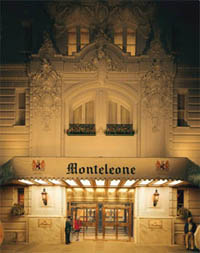
Courtesy of Hotel Monteleone
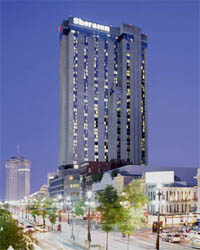
Courtesy of Sheraton New Orleans Hotel
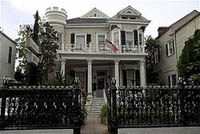
Richard Nowitz/Courtesy of NOMCVB
Hopelessly Romantic?
New Orleans is a quintessential setting for romance. Streets graced with moss-draped live oaks, wrought iron-adorned buildings and stately Greek Revival mansions are reminiscent of the Old South's New Orleans romanticized in literary works, plays and motion pictures.
Whether you and your soul mate are honeymooning or celebrating a landmark anniversary, countless options and amenities are at your beckoning.
New Orleans is a quintessential setting for romance. Streets graced with moss-draped live oaks, wrought iron-adorned buildings and stately Greek Revival mansions are reminiscent of the Old South's New Orleans romanticized in literary works, plays and motion pictures.
Whether you and your soul mate are honeymooning or celebrating a landmark anniversary, countless options and amenities are at your beckoning.
As previously alluded, accommodations include everything from high-rise hotels with luxurious honeymoon suites to quaint French Quarter bed & breakfast inns with private balconies and charming courtyards.
Couples can visit the Crescent City's beautiful parks, ride in horsedrawn vis-a-vis carriages, take a dinner jazz cruise aboard the Steamboat Natchez and traverse the Garden District as passengers of a moving national historic landmark, namely the St. Charles Avenue Streetcar.
Around Jackson Square, lovers can pose for portrait artists and take home a lasting momento of their New Orleans stay.
Sunrise strolls along the Moonwalk (the riverfront walkway named in honor of former New Orleans mayor Maurice "Moon" Landrieu) might even prompt an unexpected public display of affection!
Savor the History
Established in 1718 by Jean-Baptiste Le Moyne de Bienville as Le Nouvelle-Orleans, New Orleans has seen its share of change and weathered many storms (quite literally!). Through it all, many important aspects of the city's illustrious history have been preserved. Multicultural influences are evident just as they were hundreds of years ago, and significant buildings still stand in spite of the city's growth and countless attempts to experience urban renewal and progress. A number of historic landmarks welcome curious tourists, offering great insight into the city's past.
Formerly the Palace d'Armes around which New Orleans was built, Jackson Square is now one of the most prominent focal points in the Vieux Carré. Named in honor of General Andrew Jackson following the Battle of New Orleans in 1815, the beautiful park, reminiscent of the Place des Vosges in Paris, was designed by Louis H. Pilie. A centerpiece of the beautifully landscaped grounds is the Clark Mills sculpture of Andrew Jackson astride his spirited steed. The pose, in which Jackson is tipping his hat, is said to have been created at the insistence of the Baroness de Pontalba (with whom Jackson had been rumored to have had an affair) in response to the hero's failure to tip his hat to her! Key Jackson Square structures include St. Louis Cathedral, the Presbytère, Cabildo and Pontalba Buildings.
Couples can visit the Crescent City's beautiful parks, ride in horsedrawn vis-a-vis carriages, take a dinner jazz cruise aboard the Steamboat Natchez and traverse the Garden District as passengers of a moving national historic landmark, namely the St. Charles Avenue Streetcar.
Around Jackson Square, lovers can pose for portrait artists and take home a lasting momento of their New Orleans stay.
Sunrise strolls along the Moonwalk (the riverfront walkway named in honor of former New Orleans mayor Maurice "Moon" Landrieu) might even prompt an unexpected public display of affection!
Savor the History
Established in 1718 by Jean-Baptiste Le Moyne de Bienville as Le Nouvelle-Orleans, New Orleans has seen its share of change and weathered many storms (quite literally!). Through it all, many important aspects of the city's illustrious history have been preserved. Multicultural influences are evident just as they were hundreds of years ago, and significant buildings still stand in spite of the city's growth and countless attempts to experience urban renewal and progress. A number of historic landmarks welcome curious tourists, offering great insight into the city's past.
Formerly the Palace d'Armes around which New Orleans was built, Jackson Square is now one of the most prominent focal points in the Vieux Carré. Named in honor of General Andrew Jackson following the Battle of New Orleans in 1815, the beautiful park, reminiscent of the Place des Vosges in Paris, was designed by Louis H. Pilie. A centerpiece of the beautifully landscaped grounds is the Clark Mills sculpture of Andrew Jackson astride his spirited steed. The pose, in which Jackson is tipping his hat, is said to have been created at the insistence of the Baroness de Pontalba (with whom Jackson had been rumored to have had an affair) in response to the hero's failure to tip his hat to her! Key Jackson Square structures include St. Louis Cathedral, the Presbytère, Cabildo and Pontalba Buildings.
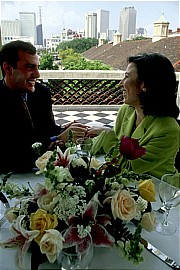
Ann Purcell/Courtesy of NOMCVB
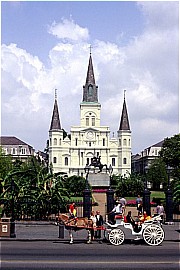
Carl Purcell/Courtesy of NOMCVB
St. Louis Cathedral, the oldest active cathedral in the nation, dates to 1794. Visitors will especially want to take note of the wonderful ceiling and altar murals painted by Erasme Humbrecht in the early 1870s. St. Anthony's Garden, located behind the cathedral, was a popular duelling site where men often settled their differences in affaires d'honneur with pistols or colichemarde.
The Presbytère (built in 1724 as a monastery) and the Cabildo (site of the Louisiana Purchase signing) both flank the St. Louis Cathedral, and are now integral parts of the Louisiana State Museum.
Built opposite each other at Jackson Square are the Pontalba Buildings, the oldest apartment buildings in the United States. Erected on land inherited from her wealthy father Don André Almonester y Rojas, the apartments cost the Baroness de Pontalba a sum of $300,000 (an astounding amount of money in 1849).
The French Market stretches several blocks from Jackson Square to Barracks Street. Its present group of buildings dates to 1813, and the architecture is representative of the various countries that have controlled Louisiana, including Spain, France and England. The first building, constructed in 1771, was destroyed by a hurricane in 1812. French Market staples include fresh shrimp, crab, crawfish and Cajun seasonings. Highlights of the market are Café du Monde (circa 1862) and the 101-year-old, family-owned Central Grocery (where shoppers can indulge in the Old World-style grocery store's trademark muffulettas with olive salad or stock up on Italian, French, Greek and Spanish delicacies, imported olive oils and regional sauces).
At 514 Chartres Street, tourists can peruse the fascinating displays of the New Orleans Pharmacy Museum. Located in an 1823 apothecary shop once belonging to Louis Joseph Dufilho Jr., the country's first licensed pharmacist, the museum's exhibits include herbal remedies, bloodletting instruments and archaic pharmaceuticals.
A final recommended stop for history buffs and musicologists is the Old U. S. Mint at 400 Esplanade Avenue. Serving as a mint from 1837 to 1909 with only a brief hiatus during the Civil War, the building is now part of the Louisiana State Museum, housing the New Orleans Jazz Collection and the much talked about Storyville exhibit of paintings.
The Presbytère (built in 1724 as a monastery) and the Cabildo (site of the Louisiana Purchase signing) both flank the St. Louis Cathedral, and are now integral parts of the Louisiana State Museum.
Built opposite each other at Jackson Square are the Pontalba Buildings, the oldest apartment buildings in the United States. Erected on land inherited from her wealthy father Don André Almonester y Rojas, the apartments cost the Baroness de Pontalba a sum of $300,000 (an astounding amount of money in 1849).
The French Market stretches several blocks from Jackson Square to Barracks Street. Its present group of buildings dates to 1813, and the architecture is representative of the various countries that have controlled Louisiana, including Spain, France and England. The first building, constructed in 1771, was destroyed by a hurricane in 1812. French Market staples include fresh shrimp, crab, crawfish and Cajun seasonings. Highlights of the market are Café du Monde (circa 1862) and the 101-year-old, family-owned Central Grocery (where shoppers can indulge in the Old World-style grocery store's trademark muffulettas with olive salad or stock up on Italian, French, Greek and Spanish delicacies, imported olive oils and regional sauces).
At 514 Chartres Street, tourists can peruse the fascinating displays of the New Orleans Pharmacy Museum. Located in an 1823 apothecary shop once belonging to Louis Joseph Dufilho Jr., the country's first licensed pharmacist, the museum's exhibits include herbal remedies, bloodletting instruments and archaic pharmaceuticals.
A final recommended stop for history buffs and musicologists is the Old U. S. Mint at 400 Esplanade Avenue. Serving as a mint from 1837 to 1909 with only a brief hiatus during the Civil War, the building is now part of the Louisiana State Museum, housing the New Orleans Jazz Collection and the much talked about Storyville exhibit of paintings.
Vintage New Orleans
Awaken Your Creativity
Apparently there is something in the water in New Orleans that spawns and nurtures creativity and fosters self-expression. After all, the city has given birth to many great writers, musicians and artists including jazz greats Louis Armstrong and Jelly Roll Morton; gospel recording artist Mahalia Jackson; R&B legend Fats Domino; Grammy winners Aaron Neville and Harry Connick Jr.; actress, comedian and Emmy-winning talk show host, Ellen DeGeneres; playwright, director, producer and actor, Tyler Perry; Emmy-winning actor John Larroquette; and, best-selling novelist Anne Rice.
Additionally, a legion of transient artists, authors, poets and playwrights have found the Bohemian ambience of the Vieux Carré much to their liking. Elements of New Orleans are evident in some of their greatest works.
Tennessee Williams (1911-1983) resided in the French Quarter for a number of years, and it was from real-life people and firsthand experiences there that he molded fictional characters and crafted some of his best plays, short stories and poems, including A Streeetcar Named Desire, Suddenly Last Summer, Vieux Carré, "Angel in the Alcove," "Hard Candy," "The Lady of Larkspur Lotion" and "Crepe de Chine."
In an interview with journalist Don Lee Keith, Williams once stated, "Writers are, as you know, the purest in spirit of all vagabonds. Especially young writers, those whose creative shapes have not yet been molded by their muses. They have trouble staying still. I did. And it isn't by chance, I think, that so many end up here in New Orleans, for short stays, at least. Then they go somewhere else and bide their time until their New Orleans seed begins to sprout. Meanwhile, this place just waits for more of them to come and go. And they do."
Nobel and Pulitzer laureate William Faulkner spent a great deal of time in New Orleans, and the Big Easy is referred to in his Absalom, Absalom! as "that city foreign and paradoxical, with its atmosphere at once fatal and languorous, at once feminine and steelhard..."
From the rhythmic beat of life in the French Quarter to the city's cultural distinctiveness and eccentricities, New Orleans continues to provide material with which the avant-garde can create compelling written works, produce intricate, improvisatory jazz arrangements and employ various media and techniques to dramatically render blank canvases and shapeless clay into grand masterpieces.
Authors, published and unpublished, will find that the milieu of New Orleans is satisfactorily conducive to learning and creating. One of the greatest assets to the city's literary world is the Pirate's Alley Faulkner Society, Inc. Located at 624 Pirate's Alley, Faulkner's former residence, the non-profit organization sponsors the Words & Music festival, hosts "Meet the Author" signing parties and holds the annual William Faulkner-William Wisdom Creative Writing Competition. In partnership with the Louisiana State Museum, the organization also presents My New Orleans, a series comprised of monthly events emphasizing the myriad characteristics that define the Big Easy.
The music industry in New Orleans hardly rivals that of New York's famed Tin Pan Alley or Nashville's Music Row, but opportunities abound for performers and composers. Some music clubs feature open mic performances, providing vocalists and musicians environments in which they can showcase their talent. These clubs also offer songwriters a chance to meet, share ideas and forge collaborations.
Aspiring musicians are especially encouraged to experience bona fide New Orleans jazz at Preservation Hall.
Apparently there is something in the water in New Orleans that spawns and nurtures creativity and fosters self-expression. After all, the city has given birth to many great writers, musicians and artists including jazz greats Louis Armstrong and Jelly Roll Morton; gospel recording artist Mahalia Jackson; R&B legend Fats Domino; Grammy winners Aaron Neville and Harry Connick Jr.; actress, comedian and Emmy-winning talk show host, Ellen DeGeneres; playwright, director, producer and actor, Tyler Perry; Emmy-winning actor John Larroquette; and, best-selling novelist Anne Rice.
Additionally, a legion of transient artists, authors, poets and playwrights have found the Bohemian ambience of the Vieux Carré much to their liking. Elements of New Orleans are evident in some of their greatest works.
Tennessee Williams (1911-1983) resided in the French Quarter for a number of years, and it was from real-life people and firsthand experiences there that he molded fictional characters and crafted some of his best plays, short stories and poems, including A Streeetcar Named Desire, Suddenly Last Summer, Vieux Carré, "Angel in the Alcove," "Hard Candy," "The Lady of Larkspur Lotion" and "Crepe de Chine."
In an interview with journalist Don Lee Keith, Williams once stated, "Writers are, as you know, the purest in spirit of all vagabonds. Especially young writers, those whose creative shapes have not yet been molded by their muses. They have trouble staying still. I did. And it isn't by chance, I think, that so many end up here in New Orleans, for short stays, at least. Then they go somewhere else and bide their time until their New Orleans seed begins to sprout. Meanwhile, this place just waits for more of them to come and go. And they do."
Nobel and Pulitzer laureate William Faulkner spent a great deal of time in New Orleans, and the Big Easy is referred to in his Absalom, Absalom! as "that city foreign and paradoxical, with its atmosphere at once fatal and languorous, at once feminine and steelhard..."
From the rhythmic beat of life in the French Quarter to the city's cultural distinctiveness and eccentricities, New Orleans continues to provide material with which the avant-garde can create compelling written works, produce intricate, improvisatory jazz arrangements and employ various media and techniques to dramatically render blank canvases and shapeless clay into grand masterpieces.
Authors, published and unpublished, will find that the milieu of New Orleans is satisfactorily conducive to learning and creating. One of the greatest assets to the city's literary world is the Pirate's Alley Faulkner Society, Inc. Located at 624 Pirate's Alley, Faulkner's former residence, the non-profit organization sponsors the Words & Music festival, hosts "Meet the Author" signing parties and holds the annual William Faulkner-William Wisdom Creative Writing Competition. In partnership with the Louisiana State Museum, the organization also presents My New Orleans, a series comprised of monthly events emphasizing the myriad characteristics that define the Big Easy.
The music industry in New Orleans hardly rivals that of New York's famed Tin Pan Alley or Nashville's Music Row, but opportunities abound for performers and composers. Some music clubs feature open mic performances, providing vocalists and musicians environments in which they can showcase their talent. These clubs also offer songwriters a chance to meet, share ideas and forge collaborations.
Aspiring musicians are especially encouraged to experience bona fide New Orleans jazz at Preservation Hall.
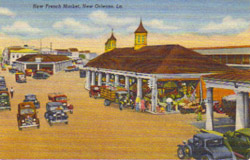
Over 350-years-old, New Orleans is one of those unique cities where the preservation of tradition and appreciation of history have been prioritized. Institutions like the French Market and Café Du Monde have stood the test of time.
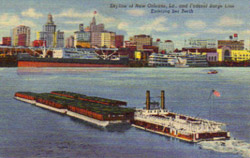
While the skyline of the Central Business District has changed and technological advances of modern commerce now prevail, New Orleans continues to rely on the Mississippi River and the many ships that dock in its port. Throughout its rich history, the city has been an important shipping center and port of entry.
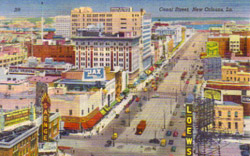
Some streets of New Orleans are drastically different today than they were just decades ago, but many beautiful landmarks have survived the wrecking ball and evaded "progress." In the Vieux Carré (French Quarter), demolition of historic buildings is even prohibited.
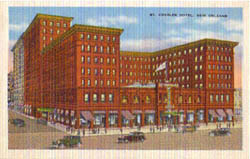
With the winds of change, though, some structures haven't fared so well. The elegant St. Charles Hotel, once owned by Dinkler Hotels, was razed years ago.
Offering a clean, family-friendly setting, Preservation Hall welcomes all ages and prohibits smoking and drinking on the premises. The Preservation Hall Jazz Band performs regularly, and the hall also features concerts by other local artists.
For visual artists, the Crescent City is an ideal locale for filling sketchbooks, plein air painting and taking photographs. Its colorful people, magnificent architecture and historical gems ensure that there is never a shortage of potential subjects. Of great benefit to the Big Easy's artistic community is the New Orleans Academy of Fine Arts located at 5256 Magazine Street. The Academy is an artist's atelier for students of all levels, offering courses in drawing, painting, sculpture, photography and art history. Figure painters and sculptors are able to enhance their skills and gain a greater understanding of anatomy by working with live models. Weather permitting, landscape oil painting classes are even taught outdoors in places like Audubon Park. The Academy also boasts a gallery in which students display their completed works for sale to the general public.
If you have a creative side, New Orleans is sure to provide many sources of inspiration and valuable educational experiences. Regardless of your field of interest, you are bound to find others of similar bent with which you can mingle and network to perfect your craft or advance an emerging career. For individuals who perceive themselves as lacking artistic gifts or abilities, a visit to New Orleans could potentially stimulate the senses, stir the imagination and prompt one to delve into avocations once thought too challenging and complex. The city might even unmask your alter ego as it did with Thomas Lanier Williams (aka Tennessee Williams)!
Jazz Up Your Collection
Antiques, unique collectibles and art are abundant in New Orleans. Shops and galleries throughout the city brim with fine furniture, exquisite objets d'art and bric-a-brac. While tourists are apt to casually shop and buy impulsively without considering a dealer's reputation or the quality of the merchandise, it goes without saying that connoisseurs with a keen eye and years of buying experience know where to search in the Big Easy for additions to their collections. Royal Street in the Vieux Carré and six-mile-long Magazine Street are essential to any collector's itinerary.
Though some dealers in New Orleans clearly cater to the affluent, many shopping destinations, particularly antiques malls, "hole in the wall" shops and smaller galleries, feature quality, affordable art and antiques to suit virtually every spending allocation and taste. In any event, the high-end stores merit browsing for education's sake. A familiarity with rare, desirable objects can come in handy in the future when one pores over off-beat shops or evaluates auction consignments.
M. S. Rau Antiques at 630 Royal Street has been in business for nearly a hundred years, and its 30,000 square foot gallery could keep even the most discriminating buyer occupied for hours.
Another Royal Street anchor is Waldhorn & Adler. This family-owned source for fine antique furniture, jewelry, porcelain and silver has occupied the same corner since 1881.
If you have a creative side, New Orleans is sure to provide many sources of inspiration and valuable educational experiences. Regardless of your field of interest, you are bound to find others of similar bent with which you can mingle and network to perfect your craft or advance an emerging career. For individuals who perceive themselves as lacking artistic gifts or abilities, a visit to New Orleans could potentially stimulate the senses, stir the imagination and prompt one to delve into avocations once thought too challenging and complex. The city might even unmask your alter ego as it did with Thomas Lanier Williams (aka Tennessee Williams)!
Jazz Up Your Collection
Antiques, unique collectibles and art are abundant in New Orleans. Shops and galleries throughout the city brim with fine furniture, exquisite objets d'art and bric-a-brac. While tourists are apt to casually shop and buy impulsively without considering a dealer's reputation or the quality of the merchandise, it goes without saying that connoisseurs with a keen eye and years of buying experience know where to search in the Big Easy for additions to their collections. Royal Street in the Vieux Carré and six-mile-long Magazine Street are essential to any collector's itinerary.
Though some dealers in New Orleans clearly cater to the affluent, many shopping destinations, particularly antiques malls, "hole in the wall" shops and smaller galleries, feature quality, affordable art and antiques to suit virtually every spending allocation and taste. In any event, the high-end stores merit browsing for education's sake. A familiarity with rare, desirable objects can come in handy in the future when one pores over off-beat shops or evaluates auction consignments.
M. S. Rau Antiques at 630 Royal Street has been in business for nearly a hundred years, and its 30,000 square foot gallery could keep even the most discriminating buyer occupied for hours.
Another Royal Street anchor is Waldhorn & Adler. This family-owned source for fine antique furniture, jewelry, porcelain and silver has occupied the same corner since 1881.

New Orleans in Song
The birthplace of jazz (the musical genre many regard as the only artform to originate in the USA), New Orleans is home to a variety of musical styles including Zydeco, Cajun, Delta blues and gospel. It's no wonder the city has produced renowned musicians like Louis Armstrong, Mahalia Jackson and Fats Domino.
Additionally, it comes as no surprise that the Big Easy has inspired many songwriters and become the subject of a slew of songs. The result is an anthology of tunes that vary from tender and romantic to comical and carefree to sensual and downright steamy.
Additionally, it comes as no surprise that the Big Easy has inspired many songwriters and become the subject of a slew of songs. The result is an anthology of tunes that vary from tender and romantic to comical and carefree to sensual and downright steamy.
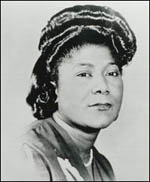
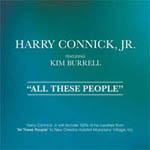
Bessie Smith, the "Empress of the Blues," recorded "New Orleans Hop Scop Blues" in 1930, and singer Billie Holiday (accompanied by jazz great Louis Armstrong) recorded "Do You Know What It Means To Miss New Orleans" for the 1947 film New Orleans, but a number of Crescent City songs have been recorded of late.
Southern rocker Edwin McCain included his self-penned "Ghosts of Jackson Square" on his 1999 Lava/Atlantic release Messenger. Two-time Grammy winning Christian artist Ashley Cleveland sang about a "big dream girl" who ultimately left the city riding a "Bus Named Desire." "Fancy," a song about a young woman who prostitutes herself to escape poverty in the "outskirts of New Orleans," became a hit for country diva Reba McEntyre. Nashville singer-songwriter Marcus Hummon, whose songs have become major hits for other artists including the platinum-selling Dixie Chicks, recorded "French Quarter Re-run" in which he proclaims to "Julianna" that ". . . in the Quarter love is a re-run." Even Atlanta singer and vocal coach to the stars Jan Smith couldn't resist a "N'Awlins" song on her 1996 Rogue release. Non Stop Thrill included "Baptized in New Orleans," an infectious number written by Michael Lunn and Laura Kissinger.
As expected, some artists have recorded songs about the events that transpired during and after the onslaught of Hurricane Katrina. Disgruntled over the federal response to storm victims, Virgin Records' Ben Harper & The Innocent Criminals recorded "Black Rain" on the 2006 multi-disk project Both Sides of the Gun. In addition to making political and social statements, other musicians have donated a portion of their CD sales to Katrina-related causes. Such is the case of Harry Connick Jr. who recorded "All These People" with gospel singer Kim Burrell. All proceeds from the sale of the song benefit New Orleans Musicians' Village.
Southern rocker Edwin McCain included his self-penned "Ghosts of Jackson Square" on his 1999 Lava/Atlantic release Messenger. Two-time Grammy winning Christian artist Ashley Cleveland sang about a "big dream girl" who ultimately left the city riding a "Bus Named Desire." "Fancy," a song about a young woman who prostitutes herself to escape poverty in the "outskirts of New Orleans," became a hit for country diva Reba McEntyre. Nashville singer-songwriter Marcus Hummon, whose songs have become major hits for other artists including the platinum-selling Dixie Chicks, recorded "French Quarter Re-run" in which he proclaims to "Julianna" that ". . . in the Quarter love is a re-run." Even Atlanta singer and vocal coach to the stars Jan Smith couldn't resist a "N'Awlins" song on her 1996 Rogue release. Non Stop Thrill included "Baptized in New Orleans," an infectious number written by Michael Lunn and Laura Kissinger.
As expected, some artists have recorded songs about the events that transpired during and after the onslaught of Hurricane Katrina. Disgruntled over the federal response to storm victims, Virgin Records' Ben Harper & The Innocent Criminals recorded "Black Rain" on the 2006 multi-disk project Both Sides of the Gun. In addition to making political and social statements, other musicians have donated a portion of their CD sales to Katrina-related causes. Such is the case of Harry Connick Jr. who recorded "All These People" with gospel singer Kim Burrell. All proceeds from the sale of the song benefit New Orleans Musicians' Village.
Prospective buyers of rare weapons, coins, currency, books and documents will want to peruse the inventory of James H. Cohen and Sons, Inc. at 437 Royal Street. A French Quarter fixture since 1898, Cohen maintains an excellent selection of ancient, treasure and rare American coins to delight any serious numismatist.
Magazine Street antiques dealers include La Belle Nouvelle Orleans, a source for architecturals like stained glass, wrought iron fencing, French doors and statuary.
For collectors of art, New Orleans provides an elaborate smorgasbord, ranging from eclectic renderings by street painters to gallery installations containing works by internationally acclaimed artists. The city's Warehouse District (a portion of the Central Business District located near the Mississippi River) has even been labeled "The SoHo of the South."
Magazine Street antiques dealers include La Belle Nouvelle Orleans, a source for architecturals like stained glass, wrought iron fencing, French doors and statuary.
For collectors of art, New Orleans provides an elaborate smorgasbord, ranging from eclectic renderings by street painters to gallery installations containing works by internationally acclaimed artists. The city's Warehouse District (a portion of the Central Business District located near the Mississippi River) has even been labeled "The SoHo of the South."
Cole Pratt Gallery, Ltd. , one of New Orleans' premier galleries, bills itself as "A contemporary fine art gallery specializing in the works of Southern artists." Situated in Uptown at the corner of Magazine and Peniston Streets, Cole Pratt's offerings include works by Phil Sandusky, a nationally known artist, New Orleans Academy of Fine Arts teacher and author of New Orleans En Plein Air.
Magazine Street's Anton Haardt Gallery, a specialist in contemporary folk art from the Deep South, is certain to command one's attention. Haardt's repertoire of funky, witty, paradoxical and ambiguous works is representative of some of the region's best known and expressive self-taught artists, including Jimmy Lee Sudduth and the late Reverend Howard Finster.
If the excitement of buying at auction is your forte, be sure to check out Neal Auction Company and New Orleans Auction Galleries. Both auction houses enjoyed record sales in 2006, attracting buyers from far and wide.
Kelly Eppler, Managing Director of New Orleans Auction Galleries at 801 Magazine Street, says New Orleans is without question the destination for serious Southern collectors. His assertion might be correct as evidenced by the auction house's record-breaking year in 2006.
When asked whether Hurricane Katrina might have destroyed important collections and, in turn, increased the value of existing art and antiques in the Gulf region, Eppler replied, "Important paintings and prints were lost in the New Orleans area and along the entire Gulf Coast due to Hurricane Katrina. Nostalgia certainly contributed to our record sales this year, but, as always, significant property brings significant prices."
Founded in 1991 by Jean R. Vidos, New Orleans Auction Galleries is one of the top auction houses in the nation. Eppler states, "Because of the wonderful estate property that is referred to us from around the country, we are able to offer a wide variety of furniture, decorative objects and artwork---from 17th-century Europe to 20th-century Louisiana."
While the auction's recent world record prices and stellar sales could, at first glance, intimidate potential bidders of more modest means, Eppler says, "There is something for everyone's budget in each of our sales because we offer large estates in their entirety."
A Discovery Awaits
Though Native Americans, Spanish explorers and French settlers found the area on which New Orleans sits eons ago, it goes without saying that the Big Easy is uncharted territory for millions of vacationers. Only in New Orleans can one find Southern hospitality wedded with the splendor of a great European metropolis like Paris. In no other locale can pedestrians witness the poignancy and celebration of a jazz funeral. And, in the Crescent City, hungry travelers can enjoy Louisiana's finest authentic Creole and Cajun cuisine (only to learn there really is a difference between the two).
Yes, the Big Easy is a place for discovery. Once there, you are sure to unearth treasures---tangible and intangible souvenirs that will evoke fond memories for a lifetime.
Unquestionably, New Orleans is more than a destination. It's an experience . . . and an unforgettable one at that.
Magazine Street's Anton Haardt Gallery, a specialist in contemporary folk art from the Deep South, is certain to command one's attention. Haardt's repertoire of funky, witty, paradoxical and ambiguous works is representative of some of the region's best known and expressive self-taught artists, including Jimmy Lee Sudduth and the late Reverend Howard Finster.
If the excitement of buying at auction is your forte, be sure to check out Neal Auction Company and New Orleans Auction Galleries. Both auction houses enjoyed record sales in 2006, attracting buyers from far and wide.
Kelly Eppler, Managing Director of New Orleans Auction Galleries at 801 Magazine Street, says New Orleans is without question the destination for serious Southern collectors. His assertion might be correct as evidenced by the auction house's record-breaking year in 2006.
When asked whether Hurricane Katrina might have destroyed important collections and, in turn, increased the value of existing art and antiques in the Gulf region, Eppler replied, "Important paintings and prints were lost in the New Orleans area and along the entire Gulf Coast due to Hurricane Katrina. Nostalgia certainly contributed to our record sales this year, but, as always, significant property brings significant prices."
Founded in 1991 by Jean R. Vidos, New Orleans Auction Galleries is one of the top auction houses in the nation. Eppler states, "Because of the wonderful estate property that is referred to us from around the country, we are able to offer a wide variety of furniture, decorative objects and artwork---from 17th-century Europe to 20th-century Louisiana."
While the auction's recent world record prices and stellar sales could, at first glance, intimidate potential bidders of more modest means, Eppler says, "There is something for everyone's budget in each of our sales because we offer large estates in their entirety."
A Discovery Awaits
Though Native Americans, Spanish explorers and French settlers found the area on which New Orleans sits eons ago, it goes without saying that the Big Easy is uncharted territory for millions of vacationers. Only in New Orleans can one find Southern hospitality wedded with the splendor of a great European metropolis like Paris. In no other locale can pedestrians witness the poignancy and celebration of a jazz funeral. And, in the Crescent City, hungry travelers can enjoy Louisiana's finest authentic Creole and Cajun cuisine (only to learn there really is a difference between the two).
Yes, the Big Easy is a place for discovery. Once there, you are sure to unearth treasures---tangible and intangible souvenirs that will evoke fond memories for a lifetime.
Unquestionably, New Orleans is more than a destination. It's an experience . . . and an unforgettable one at that.
This "rare, important and monumental" Newcomb high-glazed vase was produced in 1902. Signed and dated by the artist, Marie DeHoa LeBlanc, the 12 1/2" piece recently set a world record auction price for Newcomb Pottery, fetching $108,400 at the November 18-19, 2006 Fall Estates Auction of the New Orleans Auction Galleries.
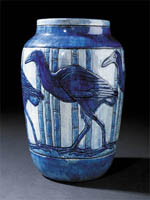
Courtesy of NOAG, Inc.
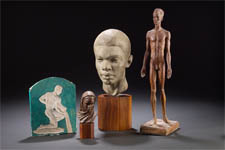
Courtesy of NOAG, Inc.
At its 2006 Fall Estates Auction, New Orleans Auction Galleries sold four sculptures by noted African American artist Richmond Barthé (1901-1989). Head of a Negro Boy brought $37,200, setting a world record for the artist for plaster sculpture. Aquarius, Black Madonna and The Seeker sold for $3,360, $14,400 and $21,000 respectively.
Tennessee Williams and A Streetcar Named Desire
In his famous play A Streetcar Named Desire, Tennessee Williams incorporated authentic New Orleans landmarks and fixtures like Galatoire's, Elysian Fields and, of course, the streetcars Cemeteries and Desire. Opening at the Shubert Theatre in New Haven, Connecticut, before moving to New York's Ethel Barrymore Theatre in December 1947, the original Broadway production cast included Marlon Brando (Stanley Kowalski), Jessica Tandy (Blanche DuBois), Kim Hunter (Stella Kowalski) and Karl Malden (Mitch). The play garnered the Pulitzer Prize for Drama in 1948.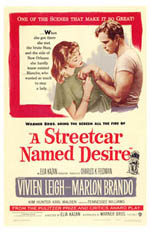
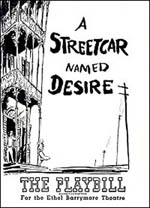
BIBLIOGRAPHY
Dan Baum, "The Lost Year: Behind the failure to rebuild," The New Yorker, August 21, 2006.
Kenneth Holditch and Richard Freeman Leavitt, Tennessee Williams and the South (Jackson: University Press of Mississippi, 2002).
Sharon Keating, New Orleans in Photographs (New York: Gramercy Books, 2005).
John R. Kemp, "Bayou Bound," Art & Antiques, Traveling Collector Issue, Volume II, 2002.
Stuart M. Lynn, New Orleans (New York: Bonanza Books, 1949).
Tom Piazza, Why New Orleans Matters (New York: ReganBooks, 2005).
Italo William Ricciuti, New Orleans and Its Envirions: The Domestic Architecture, 1727-1870 (New York, Bonanza Books, 1938).
Robert Santelli, Holly George-Warren and Jim Brown, eds., American Roots Music (New York: Harry N. Abrams, Inc., 2001).
John Webb, "The Big Easy Does It Again," Art & Antiques, Traveling Collector Issue, 2000.
Marilyn Wood, Trip Builder New Orleans (New York: Trip Builder, Inc., 1998, Rev. 2000).
Bill Wyman, Bill Wyman's Blues Odyssey: A Journey to Music's Heart & Soul (New York: Dorling Kindersley Publishing, Inc., 2001).
"Mitch Landrieu: Uniting Louisiana Behind a Single Desire," Southern Edition. Retrieved January 2007: http://www.southernedition.com
OTHER SOURCES
Electronic mail communication with Carling Dinkler III, Custom Conventions, New Orleans/Las Vegas, on December 19, 2006
Electronic mail communication with Kelly Eppler, New Orleans Auction Galleries, Inc., New Orleans, on December 22, 2006
Electronic mail communication with Renee Maxwell, Sheraton New Orleans Hotel, on December 18, 2006
Electronic mail communication with Andrea Thornton, Hotel Monteleone, New Orleans, on December 21, 2006
Author: Greg Freeman. Published January 15, 2007. Revised September 4, 2008. Revised March 27, 2010.
Dan Baum, "The Lost Year: Behind the failure to rebuild," The New Yorker, August 21, 2006.
Kenneth Holditch and Richard Freeman Leavitt, Tennessee Williams and the South (Jackson: University Press of Mississippi, 2002).
Sharon Keating, New Orleans in Photographs (New York: Gramercy Books, 2005).
John R. Kemp, "Bayou Bound," Art & Antiques, Traveling Collector Issue, Volume II, 2002.
Stuart M. Lynn, New Orleans (New York: Bonanza Books, 1949).
Tom Piazza, Why New Orleans Matters (New York: ReganBooks, 2005).
Italo William Ricciuti, New Orleans and Its Envirions: The Domestic Architecture, 1727-1870 (New York, Bonanza Books, 1938).
Robert Santelli, Holly George-Warren and Jim Brown, eds., American Roots Music (New York: Harry N. Abrams, Inc., 2001).
John Webb, "The Big Easy Does It Again," Art & Antiques, Traveling Collector Issue, 2000.
Marilyn Wood, Trip Builder New Orleans (New York: Trip Builder, Inc., 1998, Rev. 2000).
Bill Wyman, Bill Wyman's Blues Odyssey: A Journey to Music's Heart & Soul (New York: Dorling Kindersley Publishing, Inc., 2001).
"Mitch Landrieu: Uniting Louisiana Behind a Single Desire," Southern Edition. Retrieved January 2007: http://www.southernedition.com
OTHER SOURCES
Electronic mail communication with Carling Dinkler III, Custom Conventions, New Orleans/Las Vegas, on December 19, 2006
Electronic mail communication with Kelly Eppler, New Orleans Auction Galleries, Inc., New Orleans, on December 22, 2006
Electronic mail communication with Renee Maxwell, Sheraton New Orleans Hotel, on December 18, 2006
Electronic mail communication with Andrea Thornton, Hotel Monteleone, New Orleans, on December 21, 2006
Author: Greg Freeman. Published January 15, 2007. Revised September 4, 2008. Revised March 27, 2010.
Copyright
Southern Edition
All Rights Reserved
Southern Edition
All Rights Reserved
All materials contained on this site, including text and images, are protected by copyright laws and may not be reproduced without prior written permission from the publisher. Where applicable, use of some items contained on this site may require permission from other copyright owners.
Fair Use of text from SouthernEdition.com does not require express permission. Please cite SouthernEdition.com is permitted to the extent allowed by copyright law. Proper citation is requested. Please use this guide when citing a Southern Edition article.
Contact Greg Freeman or SouthernEdition.comFair Use of text from SouthernEdition.com does not require express permission. Please cite SouthernEdition.com is permitted to the extent allowed by copyright law. Proper citation is requested. Please use this guide when citing a Southern Edition article.